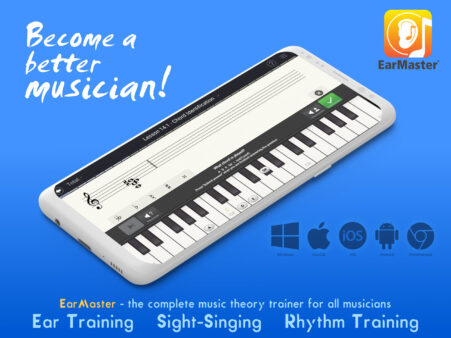How do you teach beginners ¾ time without having them pause and feel the nonexistent beat four? No matter how often I waltz around the room or count out loud emphasizing the first beat or even play the song for them, they still hold beat three twice as long as it should be. I’m starting to think it would be better to start beginners off with triple time and then switch to common time after that. Do you have a successful approach? Or do you think they’ll “get it” after a while?
Ah, yes, that sneaky beat four that just doesn’t like to be left out! This is definitely a challenge for youngsters, but it can be done. Rhythm is such a critical component of playing an instrument – arguably even more important than note reading – so it’s something worth working on over and over again until they get it. And the younger the better! Here are a few approaches that I use. Obviously, some students get it quickly with little need for reinforcement, whereas others missed out when the rhythm gene was being distributed, so it takes every approach imaginable (and then some!) before they really start to internalize different pulse patterns. 🙂
- Instead of you doing the waltzing and counting for them, have them do it with you. I almost always introduce 3/4 time by having the student learn the waltz. We emphasize the big step on beat one and then the two smaller steps following it. Movement is key, because you ultimately want the student to internalize the pulse.
- Be completely up front with the student if they are playing incorrectly. In my early years of teaching I was so afraid of hurting a student’s feelings that I often glossed over issues like this. I have since learned that the best thing I can do for my students is communicate openly with them and do what it takes to help them become skilled musicians. Acknowledge that this is a challenging time signature and that most students have a difficult time getting it at first, but if they learn it well now, they’ll have it down for life!
- Break it down. You want students to be successful every step of the way, so perhaps having them just play the first two measures in perfect rhythm would be a great first step. The penny game is perfect for this approach! Once they play the first two measures correctly a specified number of times in a row, add the third measure and do it again. This should help them grasp the concept of moving seamlessly from one measure to the next.
- Tap and count out loud. This is another approach I used to be hesitant about, but now every one of my students from beginner through advanced knows that if they are not playing the rhythm correctly they are going to have to count out loud. (By the way, if I have a student who protests that he’s already counting in his head, I say, “That’s great! Then it should be a piece of cake for you because now you just have to have your mouth say what your brain is already thinking.”) Again, the goal is accurate rhythm, so if we have to feel slightly ridiculous to reach that goal, so be it. Better to feel slightly ridiculous in the safety of the studio than face the big world outside as an incompetent musician.
- Use a rhythm instrument. Drums are especially good, and I will often pull out my djembe and have the student beat the pulse while I play and then swap instruments. In order to get the feel of the the 3/4 time, I have them beat the first beat slightly louder than the second and third.
- Record the student playing the piece. Have them listen to the recording and follow along with the printed music and see if they can identify any places where they pause, play a note too long, cut a note too short, etc. If they can hear the error, that will be a huge first step toward them being able to correct it. It’s surprising how many students don’t hear what they’re doing incorrectly – even by listening to their recording!
- Be aware of other issues that may be manifested in incorrect rhythm. Typically this case is a rhythm-specific issue, but occasionally a student will be struggling to play on beat because they are unsure about which note to play, or they are using poor fingering, or they are trying to read the words, etc. As a teacher, you have to be careful to identify what the root issue is and then address that, knowing that it will result in the correction of the secondary issues as well.
As always, if anyone has other suggestions on this issue, please feel free to share what works for you and your students!
Remember, if you have a question you’d like to contribute to next week’s Monday Mailbag, leave it in the comments below or send me an e-mail sometime this week with Monday Mailbag in the subject line!













Leave a Reply